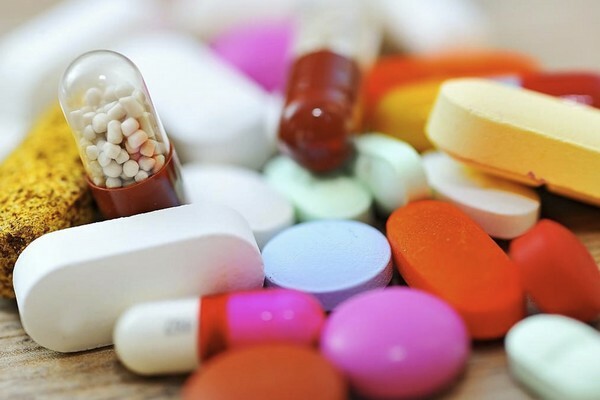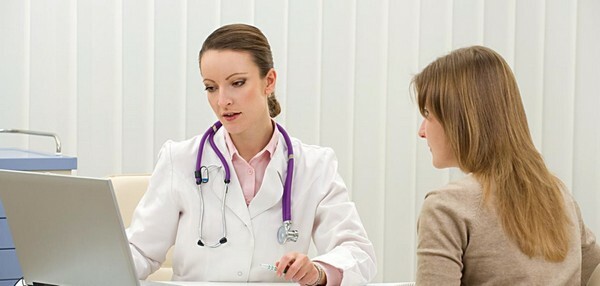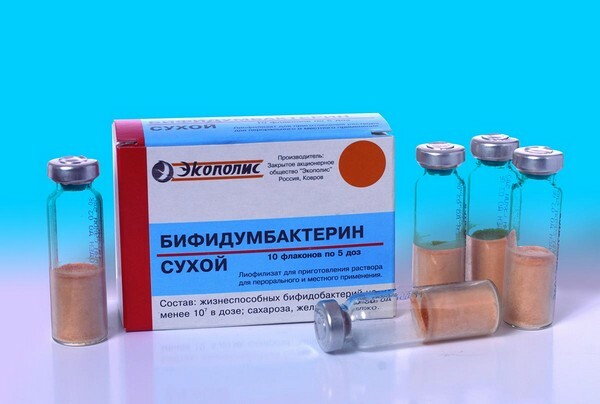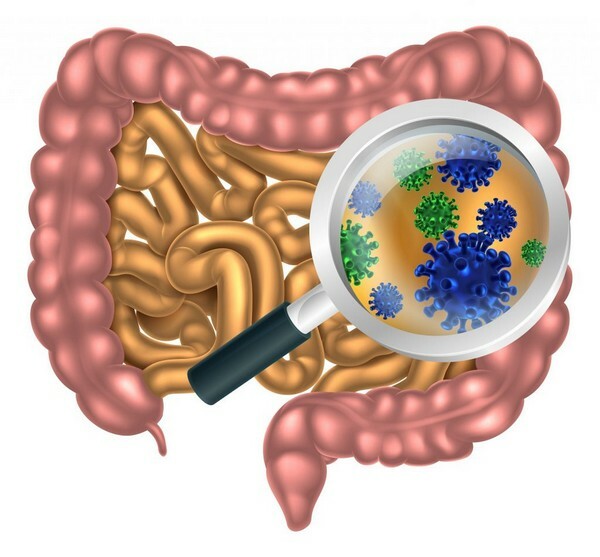- Features of
- How to give medicine to children
- How to enhance the action of probiotics
- Probiotics for antibiotic therapy
Gastroenterologists and pediatricians often prescribe probiotics to improve the performance of the gastrointestinal tract. Preparations with beneficial bacteria normalize digestion and peristalsis, destroy pathogenic microorganisms - clostridia and staphylococci. And some probiotics successfully replace antimicrobial agents, I do not provoke any side effects. High therapeutic effectiveness of the drugs is provided not only by their composition, but also by some peculiarities of use. Before taking probiotics, you should consult a doctor for advice on the appropriateness and safety of treatment.

Features of the preparation of
These medicines and dietary supplements contain a huge number of useful microorganisms that are natural inhabitants of the small and large intestine. If as a result of long-term course of antibiotic therapy or exacerbation of chronic pathology of the gastrointestinal tract, bifido- and lactobacilli died, then probiotics will help to eliminate the problem. Before you start treatment, you should carefully study the attached annotation. Methods of using probiotic drugs depend on several factors:
- species belonging to microorganisms;
- used in the manufacture of drugs technologies;
- of the probiotic form;
- age of patients;
- presence of chronic pathologies;
- purposes of the use of medicines.
The basic rule of literate use of prebiotics - capsules, dragees, diluted in water powders or lyophilizate should be taken only on an empty stomach. The time intervals for admission may vary slightly from one manufacturer to another. Some recommend using the medicine an hour before meals, and others in 30 minutes. Often there are instructions in the instructions for use about the need to take a probiotic after 2-3 hours after breakfast, lunch and dinner. The main thing is that the beneficial bacteria as little as possible affected by gastric juice.
Recommendation: For the treatment of dysbacteriosis, gastroenterologists prefer to administer multicomponent probiotics containing several types of microorganisms. Such medicines include Bifiform, Lineks, Hilak forte, Acipol.

Drugs with useful bacteria
Bifidobacteria, lactobacillus and fermented E. coli are most often found in the formulations of imported and domestic probiotics. Moreover, microorganisms of the same species in different preparations may not be identical at all. There are many strains of the same lactobacilli having little difference in pharmacological action. Many gastroenterologists prefer to prescribe to small and adult patients probiotics only of domestic manufacturers:
- Acipol;
- Bifidumbacterin;
- Lactobacterin.
They contain live dried bacterial strains that are maximally adapted for the gastrointestinal tract of a Russian.
Tip: Treatment of various dysbacteriosis is quite lengthy and requires frequent intake of probiotics. The acquisition of one large package is much more profitable than buying a few small ones.
Take probiotics with beneficial bacteria 3-5 times a day, depending on the diagnosed disease. Microorganisms are mostly destroyed by hydrochloric acid in the stomach, enzymes in the small intestine, bile acids in the duodenum. But the digestive tract can be deceived. For this, the probiotic should be taken to an empty stomach and immediately with a glass of warm water. Such a volume of liquid will help the capsule, solution or tablet to quickly begin descent to the large intestine, avoiding the encounter with aggressive gastric juice and pepsin.

Drugs with fungi
Often, doctors prescribe to adults and to children probiotics with fungi saccharomycetes, for example, Enterol. Such preparations are not afraid of digestive enzymes and hydrochloric acid in the stomach, since they are not sensitive to their aggressive effects. Despite the fact that sugarmicets belong to yeast fungi, they have nothing to do with the microorganisms that provoke:
- vaginal dysbacteriosis;
- stomatitis.
Recommendation: For the treatment of dysbacteriosis with strong symptoms, simultaneous administration of probiotics with fungi and beneficial bacteria is prescribed. Saccharomycetes create a favorable environment in the intestine for growth and active reproduction of lactobacilli, enterococci, bifidobacteria.
Marsupial fungi saccharomyces take part in the biosynthesis of many water-soluble vitamins. They control the water-electrolyte balance, which is very important when developing a viral or bacterial intestinal infection. Probiotics with beneficial fungi should be taken 3-4 times a day, washed down with pure non-carbonated water. The presence of food in the gastrointestinal tract does not affect the therapeutic activity and bioavailability of the drugs.
Do not take probiotics with fungi without prescribing a doctor because of the high likelihood of no positive treatment result. Before compiling a therapeutic regimen, a gastroenterologist or pediatrician directs the patient to a laboratory to submit a feces sample for analysis. According to the results of the study, doctors judge the deficiency of a microorganism in the intestinal biocenosis. If there is a serious shortage of lactobacilli, the use of probiotics with saccharomycetes is inappropriate.
Probiotics have virtually no side effects. In some cases, an allergic reaction may develop in adults and children with individual sensitivity to the active ingredients or ancillary components of the drugs. In this case, stop taking the probiotic and consult a doctor to replace the drug.

How to give medicine to children
Pediatricians prescribe to children probiotics for chronic constipation, diarrhea, and lack of appetite, which often develop after treatment of respiratory and intestinal infections with antibacterial agents. Preparations in capsules and enteric coated tablets are more suitable for older children. They have the skills to swallow a solid dosage form, not chewing it and not gnawing. However, many manufacturers of probiotics in capsules( Linex, Acipol) indicate in the annotation that it can be opened neatly, and the contents used for their intended purpose. Probiotics in powder can be dissolved in any liquids:
- warm water;
- breast milk;
- milk formula;
- vegetable or fruit puree.
The main thing is that the temperature of the liquid does not exceed 40 ° C, otherwise useful bacteria or fungi will die. To treat babies, use only freshly prepared mixture. Microorganisms do not have the ability to live outside the human body, so in the medicine, which is stored for more than an hour, there are no saccharomycetes, lacto- and bifidobacteria.
If the doctor prescribed the baby a probiotic in the form of a dry lyophilizate( Bifidumbacterin, Lactobacterin), then a compressed mass of yellowish color should be diluted 5-10 ml of warm water directly in a vial or a tablespoon. The fluid can be poured neatly into the mouth of a baby or added to the water for drinking. After buying lyophilized probiotics, they should be stored in the side wall of the refrigerator.
Note: Drugs and supplements for the treatment of dysbacteriosis should be given to children for 10-14 days. And if the probiotic is intended for the prevention of painful colic in newborns, the course may last for about a month.
How to take probiotics - before or after eating, tells the pediatrician. Bifidumbacterin, Lactobacterin, Linex is best given to newborns and infants 30-60 minutes before the next feeding. Older children can take capsules, solutions or tablets 2-3 hours after eating.

How to strengthen the action of probiotics
Some chronic pathologies occur against a background of a serious digestive disorder and peristalsis. Gastroenterologists diagnose in patients the death of a large number of beneficial microorganisms. Such conditions are very favorable for clostridia and staphylococci, the number of which in normal health varies in the range of 10-15%.Now nothing hinders their growth, so harmful bacteria begin to multiply, provoking:
- intestinal infections;
- pain in the epigastric region;
- indigestion and peristalsis;
- deficiency of nutrients and biologically active substances;
- chronic constipation.
To prevent these pathological conditions, taking one probiotics will not be enough. To enhance their therapeutic activity, doctors prescribe to patients the intake of prebiotics. The preparations contain synthetic disaccharides, inulin, vitamin complexes, which serve as a nutrient medium for lacto- and bifidobacteria. At the beginning of treatment should be within 1-2 days to take prebiotics 4-5 times a day, and then include in the treatment regimen and gastroenterologist recommended probiotics. Such a therapeutic scheme allows significantly accelerate the growth of useful microorganisms, increase their number in the shortest possible time.
Caution: The use of probiotics at the course of a course significantly increases immunity. Such an action can worsen the health of an adult and a child with immunodeficiency states.
Use of probiotics in antibiotic therapy
Antibacterial agents quickly destroy pneumococci, streptococci and staphylococci, but they do not spare bacteria belonging to useful intestinal biocoenosis. Long-term use of antibiotics in high doses causes the destruction of most of the bifido- and lactobacilli. The clostridia multiplying on this background can provoke an acute intestinal infection, for which macrolides, fluoroquinolones, cephalosporins are used. To prevent the development of events in this negative scenario during antibiotic therapy for small and adult patients, doctors prescribe probiotics:
- Lactobacterin;
- Enterol.
These drugs include microorganisms that have the highest resistance to antibiotics. But probiotics containing bifidobacteria and fermented intestinal rods are useless to take, since they will quickly die without reaching the intestine. Lactobacillus and preparations with useful fungi should be consumed no earlier than 2 hours after taking antibacterial agents 3-4 times a day.
Most recently, pharmacies have appeared the latest generation of drugs - symbiotic probiotics. In addition to useful lacto- and bifidobacteria, they include activated carbon. It is necessary to protect beneficial microorganisms from gastric juice and digestive enzymes. Despite the high therapeutic efficacy of such probiotics, they are not used during antibiotic therapy. Activated carbon adsorbs in its pores the active substances of cephalosporins and semisynthetic penicillins, which will significantly reduce the rate of recovery of adults and children.
Recommendation: Probiotics with bifidobacteria are used to treat dysbacteriosis and diarrhea only after taking antibiotics. The duration of the therapeutic course depends on the number of developed complications. In some cases, doctors advise taking medication 1-2 months.
